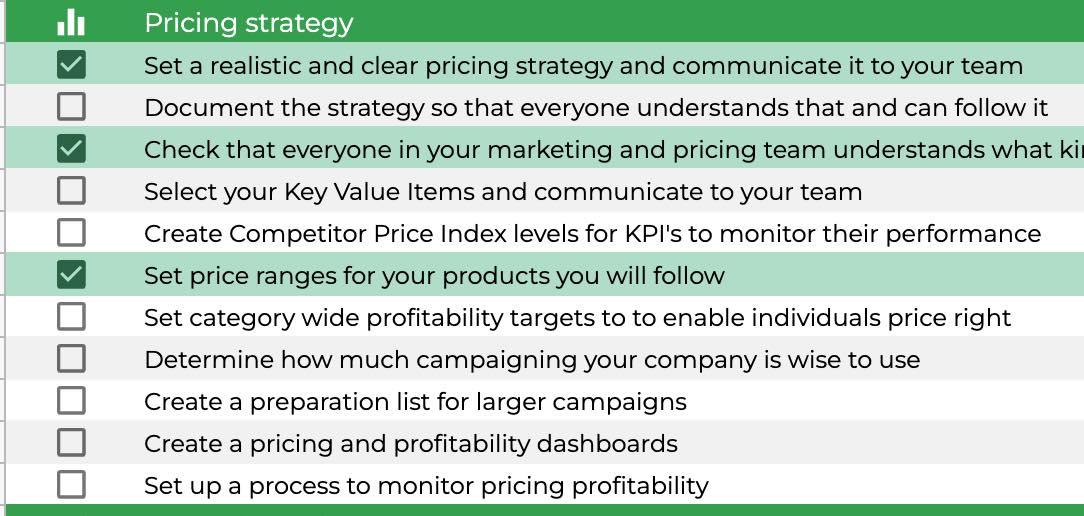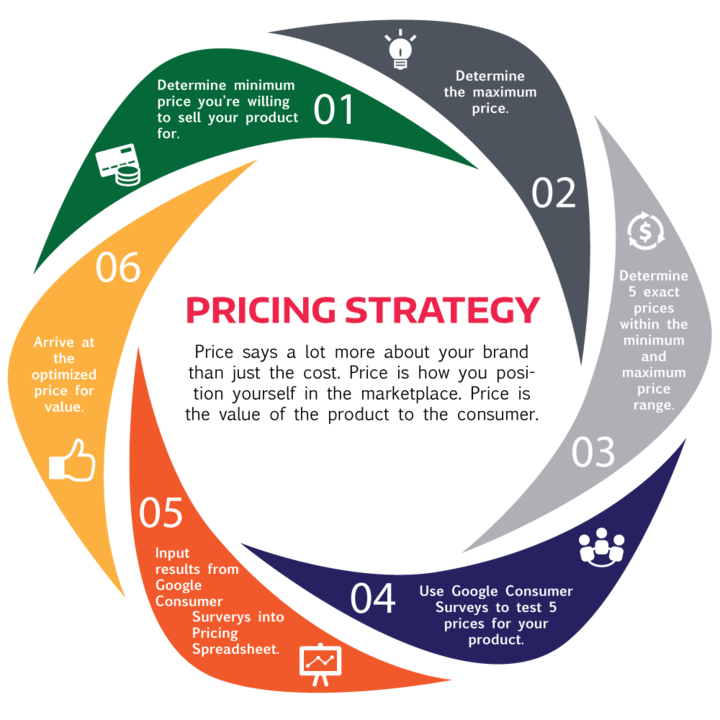Optimize Revenue With Proven Rates Method Techniques
Strategies such as value-based prices, dynamic prices, and complete market analysis can substantially improve a business's monetary performance. Comprehending client assumption and leveraging information analytics for nimble prices modifications are crucial parts of this method.
Understanding Client Perception
Understanding client perception is essential for establishing effective prices methods. It influences how customers examine a product's worth, top quality, and general attractiveness. Organizations must acknowledge that consumers typically base their willingness to pay not only on the product's inherent characteristics but likewise on emotional factors, consisting of brand credibility, social status, and regarded shortage.

Additionally, business should take into consideration the role of pricing psychology, such as beauty prices or rate anchoring, which can substantially impact consumer behavior. Understanding these assumptions allows companies to mount their prices approaches in a way that aligns with consumer assumptions while taking full advantage of profitability.
Including customer assumption into prices methods not just help in setting competitive costs yet also promotes brand name loyalty, as consumers feel comprehended and valued. Ultimately, a nuanced understanding of customer perception can bring about sustainable profits development and boosted market positioning.
Analyzing Market Trends
To create a reliable prices strategy, analyzing market fads is crucial for businesses seeking to remain affordable. Recognizing the dynamics of market changes makes it possible for companies to make informed decisions regarding pricing adjustments, item launches, and source allotment - Pricing Strategy. By checking customer habits, economic indicators, and sector growths, businesses can identify patterns that notify their prices structures
Trick parts to consider when assessing market fads include demand elasticity, seasonal changes, and emerging technologies. Demand elasticity helps organizations assess exactly how rate modifications may impact customer buying decisions. Seasonal fads can provide understandings into ideal pricing during height and off-peak periods, permitting for tactical discounting or marketing pricing. Additionally, keeping an eye on technical developments can help identify prospective threats or possibilities that could impact rates approaches.
Utilizing data analytics tools can enhance the accuracy of pattern evaluation, giving important understandings that facilitate dexterous decision-making. Companies need to also take into consideration conducting regular marketing research to validate assumptions and adapt to evolving customer choices. By leveraging these understandings, organizations can not only enhance their pricing methods however additionally strengthen their general market position, ensuring lasting success and development.
Affordable Prices Techniques
An affordable pricing approach is vital for services aiming to get an edge in a congested marketplace. By assessing rivals' rates structures and market positioning, business can strategically set their rates to draw in consumers while keeping earnings. This technique calls for an extensive understanding of both the affordable landscape and client assumptions of value.
One reliable method is rate matching, where a business uses to beat a rival or match's rate. This method can enhance client commitment and urge sales, particularly in price-sensitive markets. Furthermore, infiltration pricing can be used to record market share by initially setting costs less than rivals, attracting customers to try the item and promoting brand name understanding.
Furthermore, companies can execute emotional rates approaches, such as rates products just below a round number (e.g., $9.99 rather of $10 - Pricing Strategy.00) This can produce the perception of a better deal, influencing consumer habits
Ultimately, a successful affordable pricing technique stabilizes the need to continue to be appealing to consumers while guaranteeing that the rates design straightens with the business's overall objectives. On a regular basis readjusting and reviewing rates in feedback to market shifts and rival actions is essential for continual success.
Value-Based Prices Methods
Value-based pricing methods concentrate on setting rates largely based on the regarded value of a product and services to the consumer, as opposed to entirely on manufacturing costs or competitor costs. This technique requires a deep understanding of client demands, preferences, and the unique advantages that the services or product offers. By recognizing the specific value drivers that resonate with clients, organizations can create prices approaches that reflect real worth of their offerings.
To execute value-based prices successfully, business must participate in thorough marketing research, including customer studies and emphasis teams, to gather understandings right into customer understandings. Furthermore, organizations should sector their consumer base to tailor prices strategies that line up with various value understandings throughout sections.
Communication plays an essential duty in value-based pricing; business need to verbalize the one-of-a-kind value proposal clearly to justify the price point. Recurring assessment and modification are essential, as consumer perceptions of useful reference worth may change over time due to market characteristics or affordable activities. By focusing on value in rates methods, companies can boost client contentment, improve commitment, and ultimately maximize income.
Dynamic Pricing Models

Dynamic rates leverages innovative formulas and data analytics to check competitor prices, consumer actions, and stock degrees. By dynamically changing prices, companies can maximize profits, make best use of profit margins, and react swiftly to modifications in the marketplace. For circumstances, airline companies usually employ this model to adjust ticket costs based upon aspects like staying seats, time till departure, and competitor prices.
Nevertheless, the implementation of vibrant rates need to be come close to with care. Clear communication with consumers is crucial to maintain depend on and prevent assumptions of unfair prices techniques. Additionally, businesses ought to make sure that their prices algorithms are not excessively complex or opaque, as this can lead to consumer discontentment.
Ultimately, when carried out attentively, dynamic rates models can give businesses with a significant competitive advantage, enabling them to exploit on market opportunities while satisfying customer assumptions in a swiftly changing financial landscape.
Conclusion

Strategies such as value-based prices, vibrant rates, and published here complete market evaluation can considerably enhance a business's economic efficiency. Seasonal fads can give insights into optimum prices during optimal and off-peak periods, allowing for critical discounting or advertising rates.Dynamic pricing leverages innovative algorithms and data analytics to keep track of competitor prices, client behavior, and supply degrees. By recognizing consumer assumption, assessing market trends, and using competitive pricing strategies, companies can successfully align their rates with customer expectations. Furthermore, value-based pricing and dynamic prices models enable organizations to react agilely to market fluctuations.
Comments on “How to Change Your Pricing Strategy for Different Market Segments”